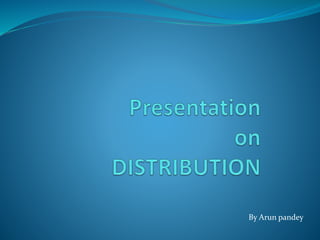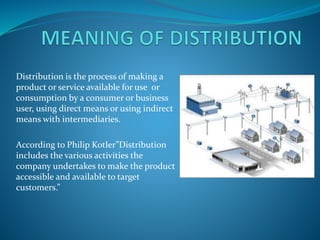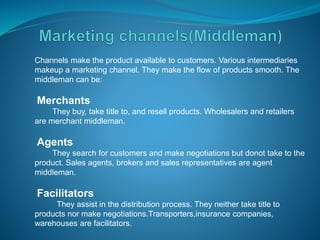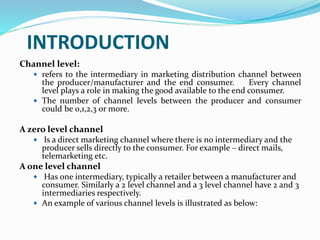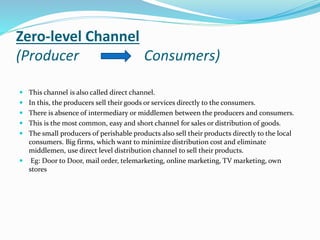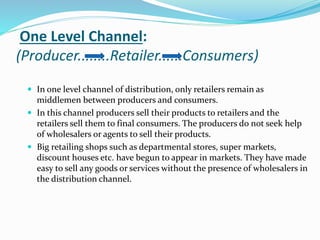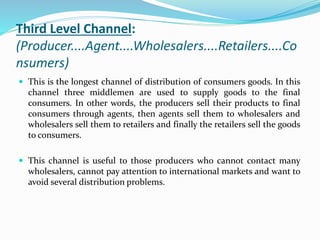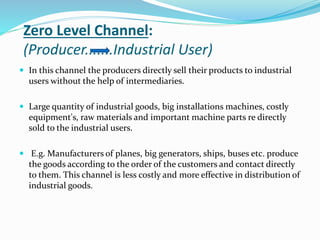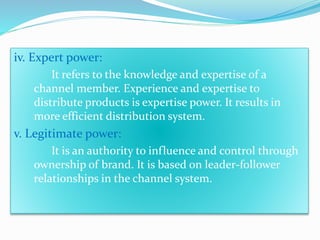Distribution involves making products available to consumers through direct or indirect means using intermediaries. It has two main components - marketing channels and physical distribution. Marketing channels include merchants, agents, and facilitators who help move products through the supply chain. Physical distribution involves activities like order processing, warehousing, transportation to get products into customers' hands. The objectives of an effective distribution system are to ensure smooth flow of goods, constant availability and accessibility of products to satisfy customers.
